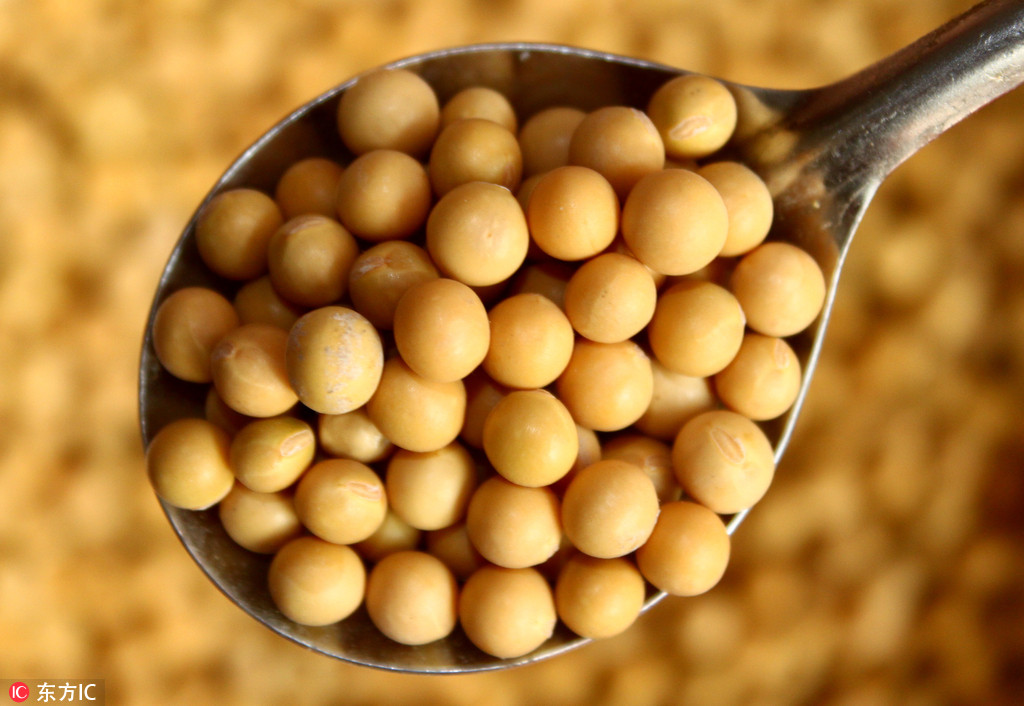Henan pig farmers cut soybean pulp consumption amid Sino-US tensions


ZHENGZHOU-Pig farmers in Central China's Henan province are reducing soybean pulp consumption in response to its rising price amid the trade conflict between China and the United States.
Ye Chuanlin is in charge of a company that specializes in producing pig feed in Henan, known for its large-scale pig industry.
In recent years, Ye's company has been focusing on developing pig feed formulas that contain a lower proportion of soybean pulp. The ongoing trade dispute propelled the company to use new formulas.
"Traditional pig feed contains about 20 percent soybean pulp. But due to the recent trade conflict, we started to cut the amount used in our products by replacing it with desirable alternatives," Ye said.
"Now my company produces a feed with only 10 percent soybean pulp," Ye added.
Soybean pulp consists of insoluble parts of the soybean that remain after the oil is extracted. With multiple factors in play, the price of soybean pulp has recently experienced a slight increase.
According to data released by the Ministry of Agriculture and Rural Affairs, in the first week of July, the average price of soybean pulp rose 3.7 percent compared to the same period last year.
China has the largest livestock breeding industry in the world, and soybeans are a major source of protein in livestock feed. In 2017, China imported more than 32.85 million metric tons of soybeans from the US, accounting for 34.4 percent of China's total soybean imports.
After the US ignited the trade war in early July, China was forced to implement 25 percent additional tariffs on a range of US products, including soybeans.
As the world's two major economic powers trade blows, the pig-rearing industry in Henan is feeling the pain.
Henan has the second-largest number of slaughter pigs in China, with an annual pig slaughter of about 62 million last year.
Official statistics indicate that the 3.2 million tons of soybeans Henan imported from the US in 2017 were able to produce 25 million tons of soybean pulp, which made up more than half of the total volume that the province needed to run the industry.
Meanwhile, from January to May this year, the number of soybeans imported from the US accounted for more than 30 percent of the total soybean imports in Henan, according to Zhengzhou Customs.
Pig farms in Henan said the recent bump in soybean pulp prices will not have a perceptible impact on the breeding industry, as some companies are reducing the percentage of pulp in their products through finding suitable replacements to hedge against the price swing.
Xie Jiangang has a small pig breeding company with 4,000 live pigs in Nanyang city, Henan province.
He said the cost of soybean pulp in pig feed has remained high for some years, but he has used a number of alternatives such as peanut meal, cotton aphid, and corn DDGS-dried distillers' grains with solubles-to reduce the percentage of soybean pulp in the fodder.
To date, Xie has successfully reduced the amount of soybean pulp in pig feed to less than 10 percent and found that the fodder that contains lower soybean pulp does not seem to affect the quality of the pork.
"I have already had five different kinds of sophisticated pig feed formulas, and I will choose the most cost-effective one," Xie said.
Professor Li Ming from Henan Agricultural University said that against the backdrop of Sino-US trade conflict, more pig breeders in Henan will seek to reduce the use of soybean pulp in their pig feed formulas as a countermeasure against the price rise.
"Although the growth rate of pigs may be affected, it will have a positive effect on the general quality of the pork," Li added.




































